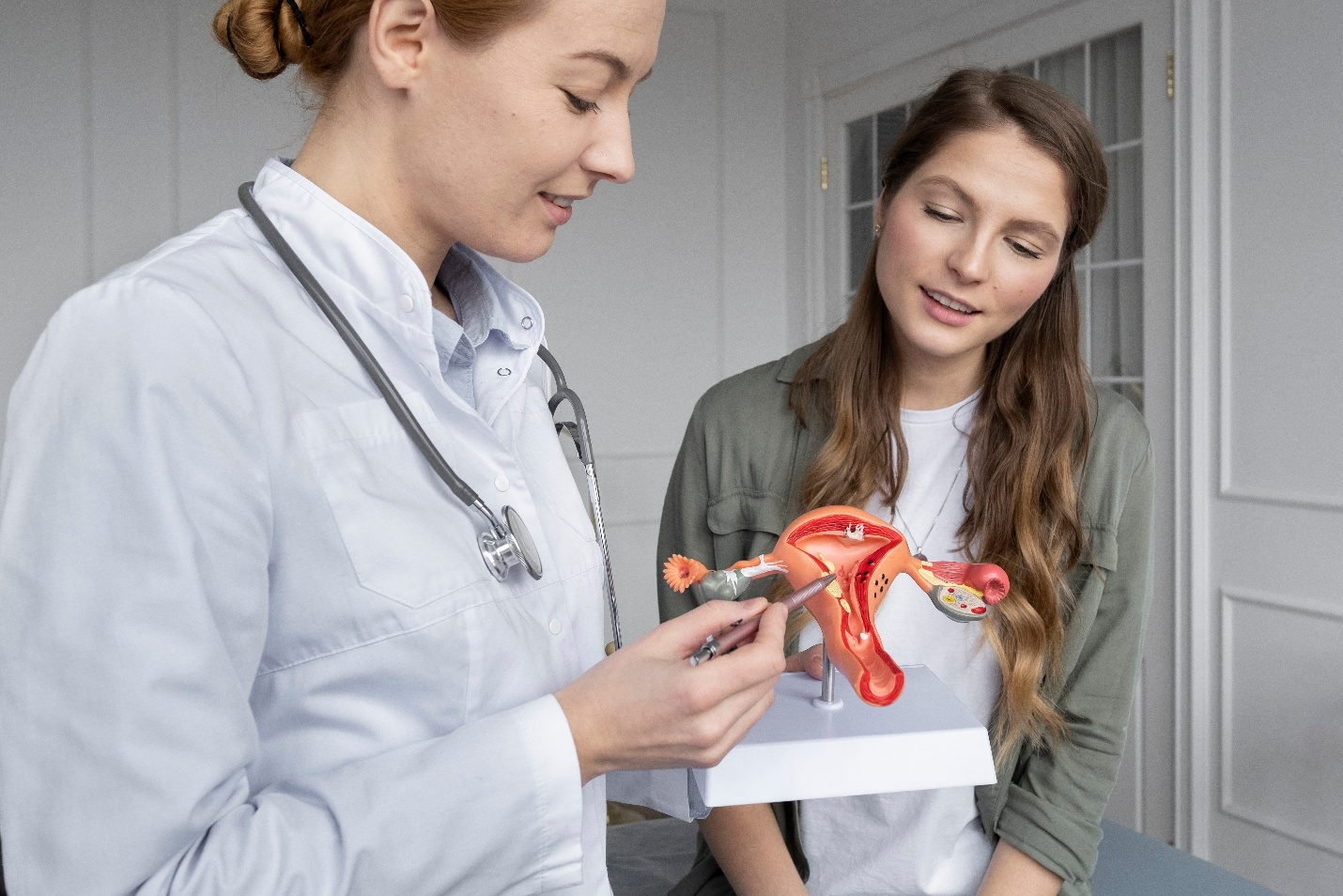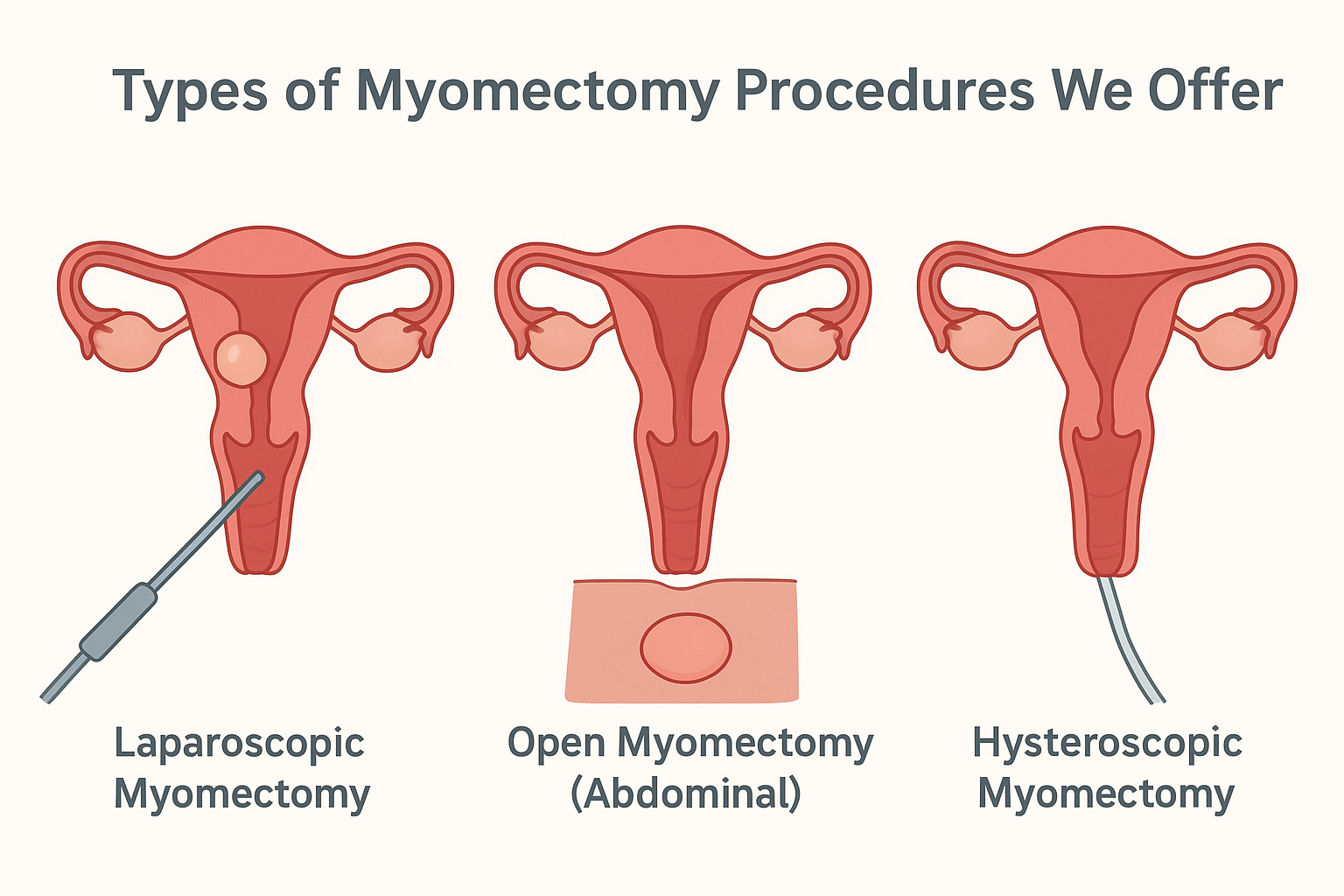Myomectomy Surgery in Mahishadal
If you’ve been told you have uterine fibroids, you’re not alone. And if you’re exploring a way to remove them without losing your uterus, a myomectomy might be the answer you’ve been searching for.
At Healing Touch Nursing Home in Mahishadal, we specialize in myomectomy surgery that’s not only safe but also designed to preserve fertility and overall uterine health. Whether you’re dealing with heavy bleeding, pelvic pain, or difficulty conceiving, fibroid removal surgery in Mahishadal doesn’t have to mean a hysterectomy.
With over 18 years of surgical and gynecological experience, Dr. G. S. Tunga leads every case with a careful balance of medical precision and personalized care. Let’s explore how we make this journey a little easier for you.

Types of Myomectomy Procedures We Offer
Not every fibroid—and not every woman—is the same. That’s why we offer different types of myomectomy procedures, based on where your fibroids are located, how large they are, and what your health goals look like.

Laparoscopic Myomectomy
Minimally invasive, often preferred for smaller fibroids. Small incisions mean less scarring, quicker recovery, and minimal discomfort.
Open Myomectomy (Abdominal)
This is recommended for larger or multiple fibroids. It involves a larger incision but allows for direct access to the uterus.
Hysteroscopic Myomectomy
This method doesn’t require any abdominal incisions. It’s done through the vagina and cervix, typically used for fibroids inside the uterine cavity.
What to Expect Before the Surgery
Planning for myomectomy surgery in Mahishadal begins with getting to know you—your symptoms, your lifestyle, and your reproductive plans.
Here’s what usually happens:
We start with imaging tests like ultrasounds or MRIs to locate and size the fibroids.
You’ll meet with Dr. Tunga to review your options and understand the procedure step by step.
Preoperative blood work and basic physical evaluations help ensure you’re in the best shape for surgery.
The Myomectomy Procedure at Healing Touch Nursing Home
Recovery and Postoperative Care
Hospital Stay: Most laparoscopic patients go home within 24 hours. Open myomectomy may require a 2–3 day stay.
Initial Recovery: You’ll feel sore for a few days, but most women are up and walking the next day.
Back to Routine: Light activities resume in a week or two. Full recovery takes 4–6 weeks depending on the procedure type.
Follow-Up: We’ll schedule visits to check on healing, offer medication guidance, and discuss next steps—especially if you’re planning a pregnancy.

Why Choose Us for Myomectomy in Mahishadal?
Specialized Experience: Dr. G. S. Tunga has decades of experience handling complex and routine myomectomy surgery in Mahishadal, including large fibroid cases and high-risk scenarios.
Advanced Surgical Options: From laparoscopy to open surgery, our facility is equipped for precision and comfort.
Fertility-Focused Care: We respect your plans for motherhood—now or later. Our approach prioritizes uterus preservation whenever possible.
Whole-Person Support: Recovery isn’t just physical. We support emotional well-being and answer every question with care.

Frequently Asked Questions
Will fibroids come back after myomectomy?
What is a myomectomy?
Who needs a myomectomy?
How soon can I get pregnant after myomectomy?
Is myomectomy safe for large fibroids?
What are the risks or complications?
Disclaimer: The information shared in this content is for educational purposes only and not for promotional use.
